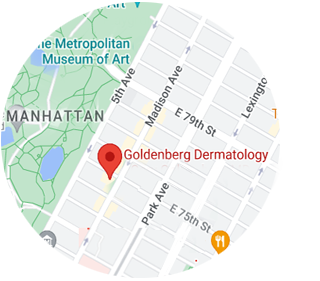5 treatment options for adult female acne
5 treatment options for adult female acne:
Acne was always thought of as a disease that mainly effects teenagers. But in the past decade the fastest growing segment of population with acne is adult women. Some of these patients never had acne as teenagers, only to develop it in their 20’s and 30’s. It’s unclear why there is such an increase, but diet, lifestyle and hormonal abnormalities have been implicated. Treatment of adult women with acne is a bit different than that of teenage acne, and should be approached on an individual basis.
1. Skincare:
Good skincare starts with a good cleanser. A gentle cleanser can be sued once daily and a medicated cleanser, such as one containing salicylic acid or benzoyl peroxide, can be used daily. A moisturizer can be used, especially if the skin becomes dry from using prescription products. Many patients with acne have combination skin – dry and oily areas. It’s important to add a moisturizer, especially to the dry skin areas.
2. Prescription topical creams:
Retinoids are a cornerstone of topical acne treatment. These are not to be confused with retinol, which is sold over the counter with claims of decreasing wrinkles and lines. Prescription retinoids are available in different concentrations and formulations. Oftentimes it’s trial and error to pick the one that will work for a certain patient, and this is something to discuss with your dermatologist. Other prescription topical agents are also available to treat acne bumps, such as combination of antibiotics and benzoyl peroxide, sulfur products and other combination products.
3. Oral therapy:
Antibiotics are commonly used to treat acne, especially moderate to severe acne in adult women. The products are especially effective for pustules (pus bumps) and cysts. However, long term safety of these products has been questioned and once acne is under control, it’s best to stop taking antibiotics.
Retinoids, such as isotretinoin (commonly known as “Accutane”) is a great option and may be the only option to offer a chance of a cure. This medication should be taken only under supervision of a dermatologist experienced in using this medication, since laboratory monitoring is needed and potential side effects need to be monitored.
Medication to improve possible hormonal imbalance may be helpful. These include birth control pills and spironolactone.
4. Procedural treatments:
Photodynamic therapy with blue light has been shown to improve acne. Blue light is likely the safest treatment option for acne during pregnancy, since no medication is used and the patient is simply exposed to blue light. This treatment has shown success, especially in patients with pustules and cysts.
Injection of cysts or pus bumps with a steroid can help improve these lesions quickly and may prevent scarring caused by inflammation.
Laser procedures, such as clear and brilliant or fraxel, can help shrink pores and decrease appearance of acne lesions, as well as even out the skin complexion in those patients who develop dark marks as the result of acne. V-beam laser can help with persistent redness often found after acne bumps resolve.
5. Lifestyle modifications:
Acne is worsened by stress and has been associated with poor diets high in non-organic dairy products and sugar.












Leave a Reply
Want to join the discussion?Feel free to contribute!